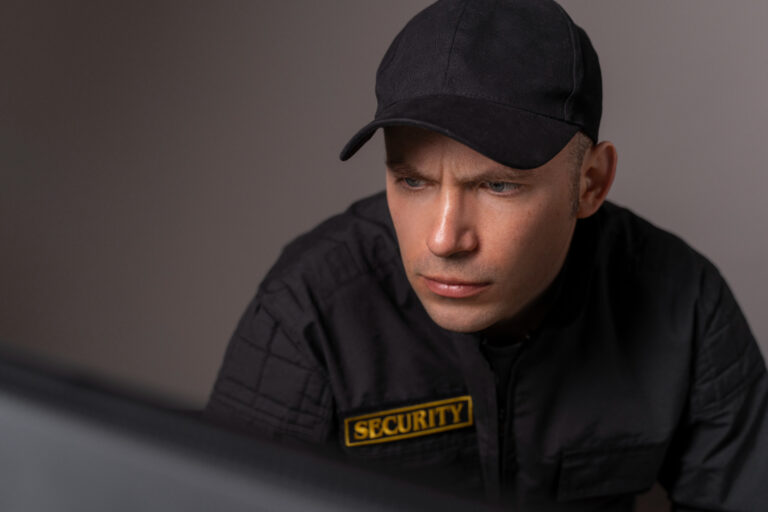How To Improve School Safety: Security Tips (2024)
How To Improve School Safety Security Tips
Ensuring a safe and secure environment in schools is a top priority for everyone. In today’s world, where safety concerns are ever-present, it’s crucial to implement effective security measures to protect students, teachers, and staff. This comprehensive guide will provide valuable tips and expert advice on How To Improve School Safety: Security Tips (2024). We’ll cover various strategies, from installing advanced security systems to engaging parents in safety efforts.
11 Expert Tips for Improving School Safety and Security

1. Upgrade or Install Security Cameras
Security cameras play a vital role in monitoring school premises. They act as a deterrent for potential wrongdoers and help in real-time monitoring. Upgrading or installing high-definition cameras can provide clear visuals and cover more areas. Ensure that these cameras are placed in strategic locations like entrances, hallways, and playgrounds.
2. Upgrade or Install a VMS (Video Management Software) for CCTV
A VMS helps manage and analyze video footage from CCTV cameras. Upgrading or installing a VMS allows for better video storage, retrieval, and analysis. It also enables remote access, allowing school authorities to monitor activities from anywhere.
3. Upgrade or Install an Access Control System
An access control system restricts unauthorized entry into the school. This system can include key cards, biometric scanners, and electronic locks. Upgrading or installing an access control system ensures that only authorized personnel can enter specific areas, enhancing overall security.
4. Upgrade or Install Burglar Alarms
Burglar alarms are essential for detecting unauthorized entry after school hours. These alarms can alert authorities and security personnel, ensuring a quick response. Regularly upgrading or installing modern burglar alarms can provide additional layers of protection.
5. Hire a School Resource Officer
A School Resource Officer (SRO) is a law enforcement officer stationed at the school. They provide security and act as a liaison between the school and local law enforcement. Hiring an SRO can significantly enhance school safety by offering on-site protection and immediate response to incidents.
6. Regularly Practice Your Lockdown Procedure
Lockdown procedures are crucial during emergencies. Regular practice ensures that students and staff know what to do in case of a threat. Conducting drills helps identify any weaknesses in the procedure and allows for timely improvements.
7. Regularly Practice Your Fire Drill
Fire drills are vital for ensuring everyone's safety during a fire. Practicing these drills regularly helps students and staff become familiar with evacuation routes and procedures. It also allows for quick and orderly evacuations, minimizing potential injuries.
8. Regularly Practice Your Disaster Drill
Natural disasters can occur without warning. Drills prepare students and staff for emergencies like earthquakes, tornadoes, or floods. These drills teach essential skills, such as finding safe spots and following evacuation plans.
9. Review Your First Aid Kits
First aid kits are essential for handling minor injuries and emergencies. Regularly reviewing and restocking these kits ensures they contain all necessary supplies. Schools should also train staff on basic first aid procedures to provide immediate assistance.
10. Train Staff on School Security Procedures
Proper training is crucial for school staff to respond effectively to emergencies. Regular training sessions on security procedures, such as lockdowns and evacuations, can improve preparedness. Staff should also be familiar with using security equipment, like fire extinguishers and defibrillators.
11. Involve Parents in School Safety
Parents play a vital role in ensuring school safety. Involving them in safety initiatives and keeping them informed about security measures can create a supportive community. Schools can organize workshops and meetings to educate parents on safety protocols and encourage active participation.

Additional Security Tips
Implement Visitor Management Systems
A visitor management system helps track and manage visitors entering the school. This system can include signing in at the front desk, issuing visitor badges, and logging visitor details. It helps maintain a record of who is on the premises, enhancing overall security.
Secure School Perimeter
Securing the school perimeter with fences and gates can prevent unauthorized access. Regularly inspecting and maintaining these barriers ensures they are in good condition. Schools can also install security lighting around the perimeter to deter potential intruders.
Promote a Positive School Climate
A positive school climate fosters a sense of safety and belonging among students. Promoting kindness, respect, and inclusivity can reduce bullying and other negative behaviors. Schools can implement programs and activities that encourage positive interactions and build strong community ties.
Encourage Open Communication
Open communication between students, staff, and parents is crucial for identifying and addressing safety concerns. Schools should establish clear channels for reporting issues, such as anonymous tip lines or suggestion boxes. Encouraging students to speak up about their concerns helps prevent potential problems.
Conclusion
Implementing these security tips and strategies can significantly enhance school safety. By staying vigilant and proactive, schools can create a secure environment where students can focus on learning and growth. Remember, safety is a collective effort that involves everyone in the school community.
FAQs
School safety is crucial for providing a secure environment where students can learn without fear. It helps protect students, staff, and visitors from potential threats and emergencies.
Common security measures include installing security cameras, access control systems, burglar alarms, and hiring School Resource Officers. Regular drills and training sessions are also essential.
Parents can contribute by staying informed about school safety measures, participating in safety initiatives, and communicating with school staff about concerns.
Schools should follow their emergency response plan, which includes procedures for lockdowns, evacuations, and communication with law enforcement and parents.
Schools should regularly practice emergency drills, such as lockdowns, fire and disaster drills, to ensure everyone is prepared for different scenarios.



![Why Every Business Needs a Security Plan in [2025]](https://americanalliancepatrols.com/wp-content/uploads/2024/12/2150368771-768x512.jpg)



